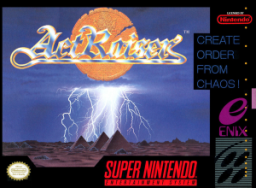Developer: Interactive Binary Illusions
Publisher: Renegade
Creators: Steven Stamatiadis, John Passfield
Additional Programming: Tony Ball
Platform: Amiga
Genre: Point and Click Adventure
Players: 1 player
The Amiga faithful were a hearty crowd, full of patience and hope. They waited for years for a port of Wing Commander and even played the slow as molasses, 16 color pixel fest that finally arrived. They suffered through inferior arcade ports and fighting games reduced to one button.
 | |
| The titular plane. |
Sadly though, by 1995, even this bastion of Amiga gaming would be stormed and brought asunder by the PC's expanding open architecture. Soon Sierra and Lucasarts would be eyeing game designs that required speech and massive amounts of animation, impossible to play without CD-Roms and hard drives. The 14 disk swap extravaganza that was Indy 4 told the tale.
 |
| I wonder if they put the ark up on its side.... |
Description:
Flight of the Amazon Queen is a point and click adventure, clearly modelled on the designs of Lucasarts. Just like SCUMM games, Flight has no deaths and keeps the player always moving from one puzzle to the next. The art style is also heavily influenced by Lucas games using many of the same poses and angles. The game almost feels like a missing Lucasarts game, with maybe just a bit less polish.
Story:
 | |
| Sadly there is no chainsaw. |
 |
| Zoologists do not get short changed in this game. |
bad. The humor is also quite whimsical, with characters that make no logical sense appearing, only to be made aware of this in almost fourth wall breaking fashion.
The puzzles are mostly logical and can be figured out without having to do a massive amount of pixel hunting. Occasionally there can be a bit too much back tracking and the map layout could have been made a bit more helpful at times to avoid unnecessary screen loads, but it's definitely manageable.
 |
| 880088135!!!! |
The Amiga's ageing ECS graphics get some serious loving in this game. The sprites are colorful, the animations are fluid and because it was developed for the Amiga load times from disk were taken into account, keeping them at a minimum (granted, nowadays they are still a bit unbearable... but this was 1995).
Everything was crisp and clean, easily identifiable and the color palette used to great effect. A beautiful game.
 | |
| Now look at that bit of perspective drawing! No polygons required. |
While the game isn't quite as good as Monkey Island or Indy 3, it can clearly hold its own in the point and click arena and was a much better game to play than most of Sierra's efforts (especially since you didn't have to worry about dying every time you tried something). The humor is good natured and the plot keeps you going. The last big scene before the ending actually had me laughing out loud.
If you want to enjoy this game today, the trusty old Amiga version is of course still a load of laughs, but there is also a CD-Rom version that includes full spoken audio which can be downloaded for FREE from gog.com or from the SCUMMVM website. There's no reason not to be enjoying the heck out of this classic.
Review by Trantor
















































